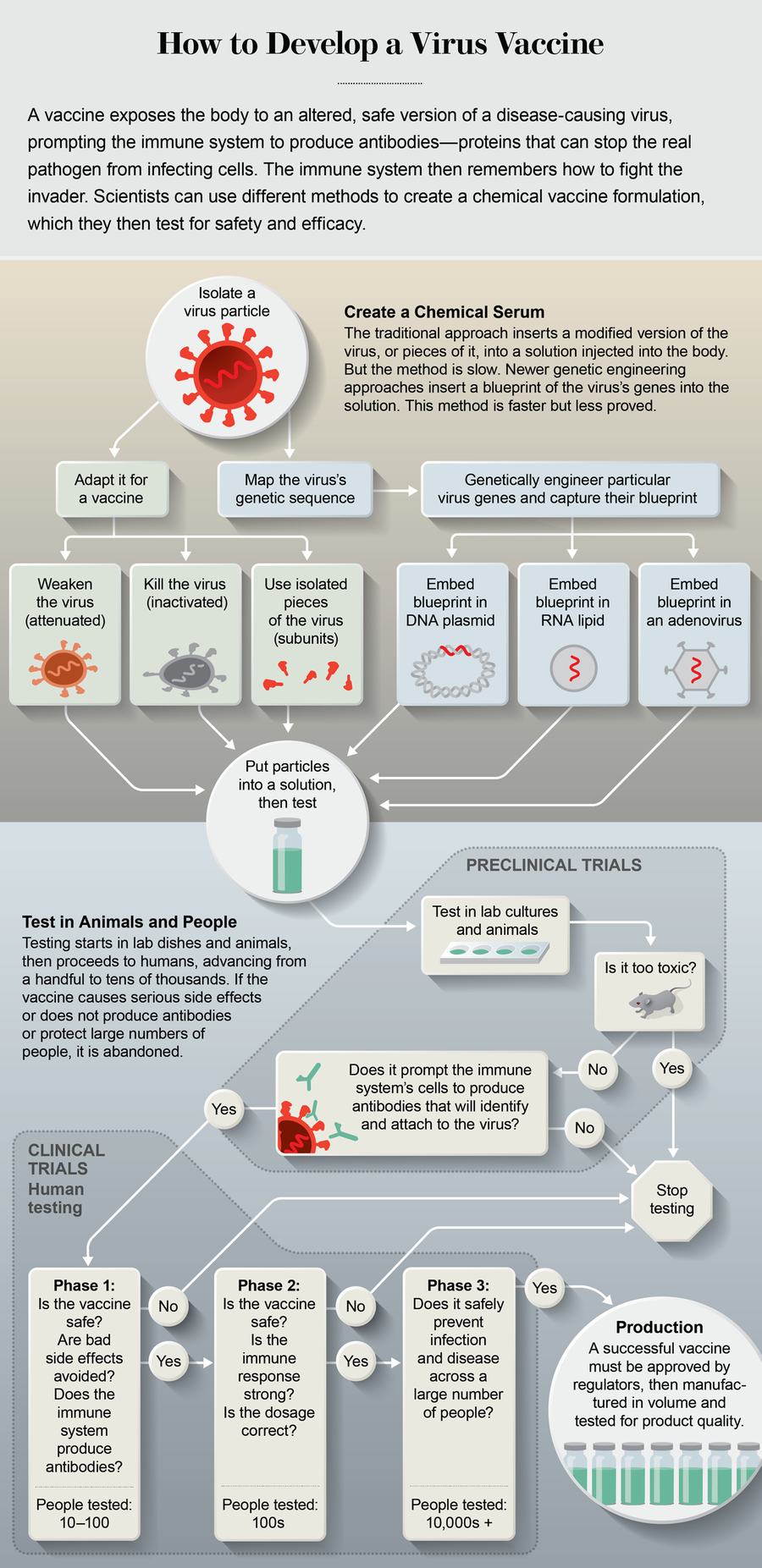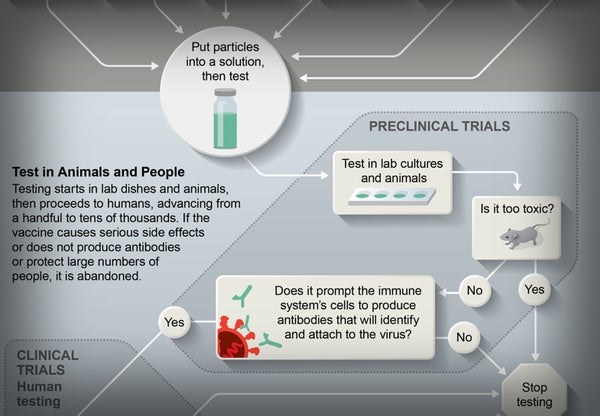On supporting science journalism
If you're enjoying this article, consider supporting our award-winning journalism by subscribing. By purchasing a subscription you are helping to ensure the future of impactful stories about the discoveries and ideas shaping our world today.
Pfizer and BioNTech announced today that their experimental vaccine against the novel coronavirus is more than 90 percent effective in preventing the disease COVID-19, based on initial analysis of results from their large phase III trial. The two companies also report that no serious safety concerns have arisen thus far. To create the vaccine, researchers genetically engineered SARS-CoV-2 genes, captured their blueprint, embedded that blueprint into an RNA molecule in solution and injected the solution into the bodies of trial participants. The full method for this approach is outlined in the graphic below (light blue boxes), which originally appeared in the June 2020 issue of Scientific American.The trial’s data have not yet been submitted for peer-review publication. If the results hold up, Pfizer and BioNTech say they could manufacture large quantities of the genetically engineered vaccine quickly.

Credit: Jen Christiansen
Read more about the coronavirus outbreak from Scientific American here. And read coverage from our international network of magazines here.
